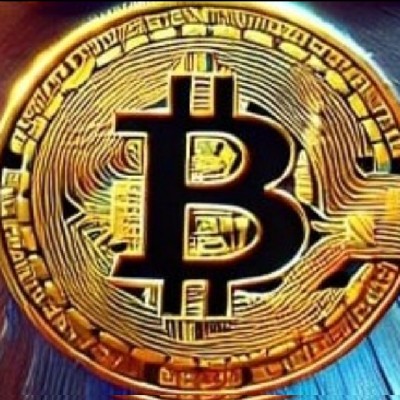Innovative Chain Abstraction Technology Enhances $PARTI’s Appeal
$PARTI
The rise of multi-chain ecosystems in the cryptocurrency space has introduced a significant challenge: interoperability. Users and developers face difficulties managing multiple wallets, fragmented liquidity, and varying transaction mechanisms across different blockchains. Particle Network ($PARTI) seeks to address this problem through chain abstraction technology, a novel approach that enhances user experience, scalability, and cross-chain functionality.
1. What Is Chain Abstraction?
At its core, chain abstraction allows users to interact with multiple blockchains as if they were a single network. Traditional blockchain interactions require users to manage separate accounts, wallets, and tokens across different chains like Ethereum, Solana, BNB Chain, and Bitcoin. Particle Network eliminates this complexity through “Universal Accounts,” enabling seamless cross-chain transactions and smart contract interactions.
2. Key Features of $PARTI’s Chain Abstraction Technology
A. Universal Accounts: A Single Identity Across All Blockchains
Instead of creating separate addresses for each blockchain, $PARTI enables users to have one universal account.
This means that whether a user is interacting with Ethereum, Solana, Avalanche, or Bitcoin, they do not need to switch wallets or manually bridge assets.
Impact: This dramatically simplifies the onboarding experience for new users and reduces friction in blockchain interactions.
B. Cross-Chain Liquidity and Asset Unification
Users often face liquidity fragmentation because assets exist in isolated blockchain environments.
$PARTI’s chain abstraction aggregates liquidity across different networks, allowing assets to be swapped, transferred, or used seamlessly between chains.
Impact: DeFi protocols and traders can access deeper liquidity pools without needing multiple bridges or exchanges.
C. Gas Abstraction: No Need for Native Tokens
One of the biggest pain points in crypto is the need to hold native tokens (ETH, SOL, BNB, etc.) for gas fees when making transactions.
With $PARTI’s infrastructure, users can pay gas fees in any token, eliminating the hassle of maintaining specific assets for transaction costs.
Impact: This is particularly useful for onboarding mainstream users who may not be familiar with blockchain gas fees.
D. Secure and Efficient Cross-Chain Messaging
Many interoperability solutions rely on cross-chain bridges, which have been vulnerable to hacks exceeding $2 billion in losses over the past few years.
Particle Network aims to implement trust-minimized, decentralized validation mechanisms for cross-chain communication, improving security compared to traditional bridges.
Impact: This makes cross-chain DeFi, NFTs, and GameFi applications more secure and user-friendly.
3. How $PARTI's Chain Abstraction Enhances Its Market Appeal
A. Mass Adoption and Mainstream Accessibility
One of the main barriers preventing mass adoption of crypto is complexity.
By simplifying wallet management, cross-chain transactions, and gas fees, Particle Network lowers the entry barrier for retail users and developers.
Why It Matters: If $PARTI successfully integrates with major DeFi, gaming, and NFT platforms, it could become a foundational technology for mainstream Web3 adoption.
B. DeFi and Institutional Use Cases
Institutional investors and DeFi protocols often face liquidity fragmentation and inefficiencies when managing assets across multiple chains.
$PARTI’s ability to unify liquidity and facilitate frictionless cross-chain trading makes it attractive for professional traders and financial institutions.
Why It Matters: This positions Particle Network as a strong contender in the growing institutional DeFi market.
C. Competitive Edge Over Existing Blockchain Solutions
Unlike traditional Layer-1 or Layer-2 solutions that focus solely on scaling transactions on a single chain, $PARTI’s chain abstraction is a multi-chain infrastructure upgrade.
Compared to Ethereum L2s (Arbitrum, Optimism): While rollups improve scalability, they do not solve interoperability, which $PARTI directly addresses.
Compared to Cross-Chain Bridges (Wormhole, LayerZero): Most bridges still require separate wallets and complex user interactions, whereas $PARTI streamlines the experience into one unified account system.
4. Challenges and Potential Risks
While $PARTI’s technology is innovative, it faces several potential challenges:
Adoption and Integration: For chain abstraction to succeed, major DeFi, NFT, and GameFi applications must integrate with $PARTI’s infrastructure. Adoption takes time and requires strong partnerships.
Security Risks: Cross-chain solutions are historically vulnerable to hacks and smart contract exploits. Particle Network will need robust security mechanisms to maintain user trust.
Regulatory Uncertainty: As regulatory bodies scrutinize cross-chain transactions, compliance frameworks for interoperable networks may introduce challenges for Particle Network’s expansion.
Conclusion: A Game-Changer in the Multi-Chain Era?
Particle Network’s chain abstraction technology offers a significant step forward in blockchain usability, interoperability, and liquidity unification. By eliminating barriers like multiple wallets, fragmented liquidity, and native gas token dependencies, $PARTI has the potential to drive mass adoption and reshape the multi-chain ecosystem.
However, its success will depend on developer adoption, security resilience, and real-world integrations. If Particle Network can overcome these hurdles, it could become a foundational infrastructure layer for the next generation of Web3 applications.$PARTI

Banana For Scale ($BANANAS31 ) is a meme-based cryptocurrency that has garnered attention within the crypto community. Here’s an analysis of its current trading status: 
Current Price and Market Performance:
• Price: As of March 31, 2025, $BANANAS31 is trading at approximately $0.005429 USD.
• 24-Hour Change: The token has experienced a 4.37% increase in the last 24 hours. 
• Market Capitalization: $BANANAS31 holds a market cap of around $54.3 million USD, ranking it at #471 in the cryptocurrency market. 
• Trading Volume: The 24-hour trading volume stands at approximately $22.7 million USD. 
Technical Indicators:
• Relative Strength Index (RSI): The RSI is currently around 65, indicating a moderately overbought condition and suggesting a bullish sentiment. 
• Moving Average Convergence Divergence (MACD): The MACD shows a bullish crossover, reinforcing upward momentum. 
• Bollinger Bands: The price is moving closer to the upper band, hinting at potential consolidation or further breakout. 
Key Levels:
• Support Level: $0.005137 USD. 
• Resistance Level: $0.005815 USD. 
Market Sentiment and Holder Analysis:
The average buy-in price for the top 100 addresses is $0.00388, indicating an unrealized gain of approximately 82.67%. The average sell price is $0.00462, with an unrealized gain of about 53.59%. Most large holders remain in profit, with no signs of concentrated selling pressure. 
Community and Adoption:
Launched on the BNB Chain, $BANANAS31 has rapidly gained traction, attracting over 16,600 holders within just over a week. Its community has also expanded to more than 8,000 members in the same period, continuing to grow at an impressive rate. 
Price Predictions:
According to TradingBeasts’ forecast, the price of $BANANAS31 is projected to reach a minimum of $0.0045740007 and a maximum of $0.0056517972 in 2025. 
Conclusion:
$BANANAS31 has demonstrated significant growth, supported by strong community engagement and increasing market exposure. However, as with all cryptocurrencies, especially meme coins, prices can be highly volatile. Investors should conduct thorough research and exercise caution when considering trading $BANANAS31 . 


 最低価格
最低価格 最高価格
最高価格 


































